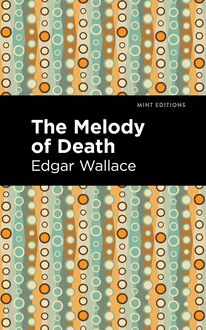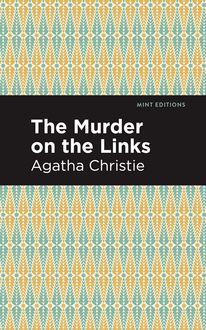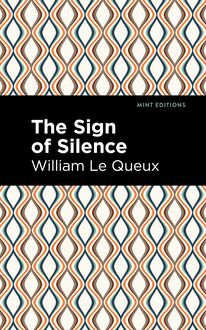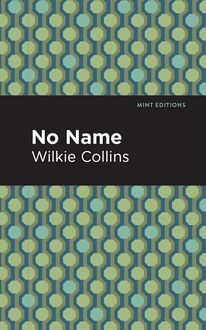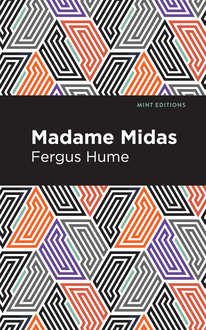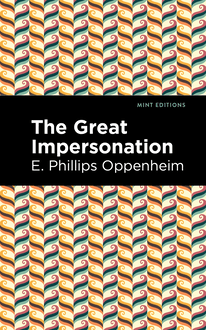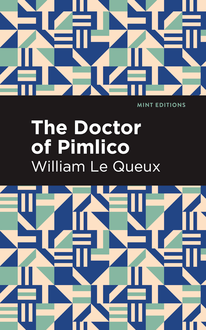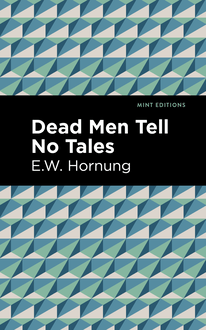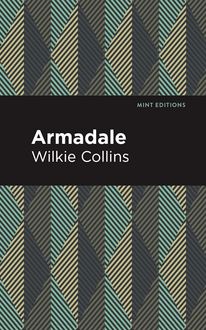-
 Univers
Univers
-
 Ebooks
Ebooks
-
 Livres audio
Livres audio
-
 Presse
Presse
-
 Podcasts
Podcasts
-
 BD
BD
-
 Documents
Documents
-
- Cours
- Révisions
- Ressources pédagogiques
- Sciences de l’éducation
- Manuels scolaires
- Langues
- Travaux de classe
- Annales de BEP
- Etudes supérieures
- Maternelle et primaire
- Fiches de lecture
- Orientation scolaire
- Méthodologie
- Corrigés de devoir
- Annales d’examens et concours
- Annales du bac
- Annales du brevet
- Rapports de stage
La lecture à portée de main
Vous pourrez modifier la taille du texte de cet ouvrage
Découvre YouScribe en t'inscrivant gratuitement
Je m'inscrisDécouvre YouScribe en t'inscrivant gratuitement
Je m'inscrisEn savoir plus
Vous pourrez modifier la taille du texte de cet ouvrage
En savoir plus

Description
The Mystery of the Yellow Room (1908) is a novel by French writer Gaston Leroux. Originally serialized in L’Illustration from September to November 1907, The Mystery of the Yellow Room marked the first appearance of popular character Joseph Rouletabille, a reporter and part-time sleuth who features in several of Leroux’s novels. Originally a journalist, Leroux turned to fiction after reading the works of Arthur Conan Doyle and Edgar Allan Poe. Often considered one of the best locked-room mysteries of all time, the novel has been adapted several times for film and television. Joseph Rouletabille is more than meets the eye. A reporter by profession, he spends his free time working as an amateur detective, using his journalistic talents to compile facts and track down leads. When the young daughter of a prominent professor is found badly beaten in a locked room at the Château du Glandier, Roulebatille sets out to investigate with his trusted assistant Sainclair. After conducting interviews with several members of the castle staff, he is told that France’s top detective Frédéric Larsan has been assigned to the case. Larsan soon names Robert Darzac, Ms. Stangerson’s fiancé, as his primary suspect. Having already ruled Darzac out, Roulebatille begins to grow suspicious when the man is arrested and seems hesitant to defend himself. Working behind the scenes, the unassuming sleuth must race against time to prove Darzac’s innocence and stop Ms. Stangerson’s attacker from finishing what he started. The Mystery of the Yellow Room is a story of danger and suspense from one of history’s finest detective novelists. Joseph Rouletabille is without a doubt France’s answer to Sherlock Holmes. With a beautifully designed cover and professionally typeset manuscript, this edition of Gaston Leroux’s The Mystery of the Yellow Room is a classic of French literature reimagined for modern readers.
Sujets
Informations
| Publié par | Mint Editions |
| Date de parution | 28 mai 2021 |
| Nombre de lectures | 0 |
| EAN13 | 9781513287959 |
| Langue | English |
| Poids de l'ouvrage | 1 Mo |
Informations légales : prix de location à la page 0,0500€. Cette information est donnée uniquement à titre indicatif conformément à la législation en vigueur.
Extrait
The Mystery of “The Yellow Room”
Gaston Leroux
The Mystery of “The Yellow Room” was first published in 1907.
This edition published by Mint Editions 2021.
ISBN 9781513282930 | E-ISBN 9781513287959
Published by Mint Editions ®
minteditionbooks.com
Publishing Director: Jennifer Newens
Design & Production: Rachel Lopez Metzger
Project Manager: Micaela Clark
Typesetting: Westchester Publishing Services
C ONTENTS I. I N W HICH W E B EGIN N OT TO U NDERSTAND II. I N W HICH J OSEPH R OULETABILLE A PPEARS FOR THE F IRST T IME III. “ A M AN H AS P ASSED L IKE A S HADOW T HROUGH THE B LINDS” IV. “ I N THE B OSOM OF W ILD N ATURE” V. I N W HICH J OSEPH R OULETABILLE M AKES A R EMARK TO M ONSIEUR R OBERT D ARZAC W HICH P RODUCES I TS L ITTLE E FFECT VI. I N THE H EART OF THE O AK G ROVE VII. I N W HICH R OULETABILLE S ETS O UT ON AN E XPEDITION U NDER THE B ED VIII. T HE E XAMINING M AGISTRATE Q UESTIONS M ADEMOISELLE S TANGERSON IX. R EPORTER AND D ETECTIVE X. “ W E S HALL H AVE TO E AT R ED M EAT— N OW” XI. I N W HICH F REDERIC L ARSAN E XPLAINS H OW THE M URDERER W AS A BLE TO G ET O UT OF THE “ Y ELLOW R OOM” XII. F REDERIC L ARSAN’S C ANE XIII. “ T HE P RESBYTERY H AS L OST N OTHING OF I TS C HARM, N OR THE G ARDEN I TS B RIGHTNESS” XIV. “ I E XPECT THE A SSASSIN T HIS E VENING” XV. T HE T RAP XVI. S TRANGE P HENOMENON OF THE D ISSOCIATION OF M ATTER XVII. T HE I NEXPLICABLE G ALLERY XVIII. R OULETABILLE H AS D RAWN A C IRCLE B ETWEEN THE T WO B UMPS ON H IS F OREHEAD XIX. R OULETABILLE I NVITES M E TO B REAKFAST AT THE D ONJON I NN XX. A N A CT OF M ADEMOISELLE S TANGERSON XXI. O N THE W ATCH XXII. T HE I NCREDIBLE B ODY XXIII. T HE D OUBLE S CENT XXIV. R OULETABILLE K NOWS THE T WO H ALVES OF THE M URDERER XXV. R OULETABILLE G OES ON A J OURNEY XXVI. I N W HICH J OSEPH R OULETABILLE I S A WAITED WITH I MPATIENCE XXVII. I N W HICH J OSEPH R OULETABILLE A PPEARS IN A LL H IS G LORY XXVIII. I N W HICH I T I S P ROVED T HAT O NE D OES N OT A LWAYS T HINK OF E VERYTHING XXIX. T HE M YSTERY OF M ADEMOISELLE S TANGERSON
I
I N W HICH W E B EGIN N OT TO U NDERSTAND
I t is not without a certain emotion that I begin to recount here the extraordinary adventures of Joseph Rouletabille. Down to the present time he had so firmly opposed my doing it that I had come to despair of ever publishing the most curious of police stories of the past fifteen years. I had even imagined that the public would never know the whole truth of the prodigious case known as that of the “Yellow Room”, out of which grew so many mysterious, cruel, and sensational dramas, with which my friend was so closely mixed up, if, propos of a recent nomination of the illustrious Stangerson to the grade of grandcross of the Legion of Honour, an evening journal—in an article, miserable for its ignorance, or audacious for its perfidy—had not resuscitated a terrible adventure of which Joseph Rouletabille had told me he wished to be for ever forgotten.
The “Yellow Room”! Who now remembers this affair which caused so much ink to flow fifteen years ago? Events are so quickly forgotten in Paris. Has not the very name of the Nayves trial and the tragic history of the death of little Menaldo passed out of mind? And yet the public attention was so deeply interested in the details of the trial that the occurrence of a ministerial crisis was completely unnoticed at the time. Now the “Yellow Room” trial, which, preceded that of the Nayves by some years, made far more noise. The entire world hung for months over this obscure problem—the most obscure, it seems to me, that has ever challenged the perspicacity of our police or taxed the conscience of our judges. The solution of the problem baffled everybody who tried to find it. It was like a dramatic rebus with which old Europe and new America alike became fascinated. That is, in truth—I am permitted to say, because there cannot be any author’s vanity in all this, since I do nothing more than transcribe facts on which an exceptional documentation enables me to throw a new light—that is because, in truth, I do not know that, in the domain of reality or imagination, one can discover or recall to mind anything comparable, in its mystery, with the natural mystery of the “Yellow Room”.
That which nobody could find out, Joseph Rouletabille, aged eighteen, then a reporter engaged on a leading journal, succeeded in discovering. But when, at the Assize Court, he brought in the key to the whole case, he did not tell the whole truth. He only allowed so much of it to appear as sufficed to ensure the acquittal of an innocent man. The reasons which he had for his reticence no longer exist. Better still, the time has come for my friend to speak out fully. You are going to know all; and, without further preamble, I am going to place before your eyes the problem of the “Yellow Room” as it was placed before the eyes of the entire world on the day following the enactment of the drama at the Chateau du Glandier.
On the 25th of October, 1892, the following note appeared in the latest edition of the “Temps”:
“A frightful crime has been committed at the Glandier, on the border of the forest of Sainte-Genevieve, above Epinay-sur-Orge, at the house of Professor Stangerson. On that night, while the master was working in his laboratory, an attempt was made to assassinate Mademoiselle Stangerson, who was sleeping in a chamber adjoining this laboratory. The doctors do not answer for the life of Mdlle. Stangerson.”
The impression made on Paris by this news may be easily imagined. Already, at that time, the learned world was deeply interested in the labours of Professor Stangerson and his daughter. These labours—the first that were attempted in radiography—served to open the way for Monsieur and Madame Curie to the discovery of radium. It was expected the Professor would shortly read to the Academy of Sciences a sensational paper on his new theory,—the Dissociation of Matter,—a theory destined to overthrow from its base the whole of official science, which based itself on the principle of the Conservation of Energy. On the following day, the newspapers were full of the tragedy. The “Matin,” among others, published the following article, entitled: “A Supernatural Crime”:
“These are the only details,” wrote the anonymous writer in the “Matin”—“we have been able to obtain concerning the crime of the Chateau du Glandier. The state of despair in which Professor Stangerson is plunged, and the impossibility of getting any information from the lips of the victim, have rendered our investigations and those of justice so difficult that, at present, we cannot form the least idea of what has passed in the ‘Yellow Room’ in which Mdlle. Stangerson, in her night-dress, was found lying on the floor in the agonies of death. We have, at least, been able to interview Daddy Jacques—as he is called in the country—a old servant in the Stangerson family. Daddy Jacques entered the ‘Yellow Room’ at the same time as the Professor. This chamber adjoins the laboratory. Laboratory and ‘Yellow Room’ are in a pavilion at the end of the park, about three hundred metres (a thousand feet) from the chateau.
“‘It was half-past twelve at night,’ this honest old man told us, ‘and I was in the laboratory, where Monsieur Stangerson was still working, when the thing happened. I had been cleaning and putting instruments in order all the evening and was waiting for Monsieur Stangerson to go to bed. Mademoiselle Stangerson had worked with her father up to midnight; when the twelve strokes of midnight had sounded by the cuckoo-clock in the laboratory, she rose, kissed Monsieur Stangerson and bade him good-night. To me she said “bon soir, Daddy Jacques” as she passed into the “Yellow Room”. We heard her lock the door and shoot the bolt, so that I could not help laughing, and said to Monsieur: “There’s Mademoiselle double-locking herself in,—she must be afraid of the ‘Bete du bon Dieu!’” Monsieur did not even hear me, he was so deeply absorbed in what he was doing. Just then we heard the distant miawing of a cat. “Is that going to keep us awake all night?” I said to myself; for I must tell you, Monsieur, that, to the end of October, I live in an attic of the pavilion over the “Yellow Room”, so that Mademoiselle should not be left alone through the night in the lonely park. It was the fancy of Mademoiselle to spend the fine weather in the pavilion; no doubt, she found it more cheerful than the chateau and, for the four years it had been built, she had never failed to take up her lodging there in the spring. With the return of winter, Mademoiselle returns to the chateau, for there is no fireplace in the “Yellow Room”.
“‘We were staying in the pavilion, then—Monsieur Stangerson and me. We made no noise. He was seated at his desk. As for me, I was sitting on a chair, having finished my work and, looking at him, I said to myself: “What a man!—what intelligence!—what knowledge!” I attach importance to the fact that we made no noise; for, because of that, the assassin certainly thought that we had left the place. And, suddenly, while the cuckoo was sounding the half after midnight, a desperate clamour broke out in the “Yellow Room”. It was the voice of Mademoiselle, crying “Murder!—murder!—help!” Immediately afterwards revolver shots rang out and there was a great noise of tables and furniture being thrown to the ground, as if in the course of a struggle, and again the voice of Mademoiselle calling, “Murder!—help!—Papa!—Papa!—”
“‘You may be sure that we quickly sprang up and that Monsieur Stangerson and I threw ourselves upon the door. But alas! it was locked, fast locked, on the inside, by the care of Mademoiselle, as I have told you, with key and bolt. We tried to force it open, but it remained firm. Monsieur Stangerson was like a madman, and truly, it was enough to make him one, for we heard Mademoiselle still calling “Help!—help!” Monsieur Stangerson showe
-
 Univers
Univers
-
 Ebooks
Ebooks
-
 Livres audio
Livres audio
-
 Presse
Presse
-
 Podcasts
Podcasts
-
 BD
BD
-
 Documents
Documents
-
Jeunesse
-
Littérature
-
Ressources professionnelles
-
Santé et bien-être
-
Savoirs
-
Education
-
Loisirs et hobbies
-
Art, musique et cinéma
-
Actualité et débat de société
-
Jeunesse
-
Littérature
-
Ressources professionnelles
-
Santé et bien-être
-
Savoirs
-
Education
-
Loisirs et hobbies
-
Art, musique et cinéma
-
Actualité et débat de société
-
Actualités
-
Lifestyle
-
Presse jeunesse
-
Presse professionnelle
-
Pratique
-
Presse sportive
-
Presse internationale
-
Culture & Médias
-
Action et Aventures
-
Science-fiction et Fantasy
-
Société
-
Jeunesse
-
Littérature
-
Ressources professionnelles
-
Santé et bien-être
-
Savoirs
-
Education
-
Loisirs et hobbies
-
Art, musique et cinéma
-
Actualité et débat de société
- Cours
- Révisions
- Ressources pédagogiques
- Sciences de l’éducation
- Manuels scolaires
- Langues
- Travaux de classe
- Annales de BEP
- Etudes supérieures
- Maternelle et primaire
- Fiches de lecture
- Orientation scolaire
- Méthodologie
- Corrigés de devoir
- Annales d’examens et concours
- Annales du bac
- Annales du brevet
- Rapports de stage
